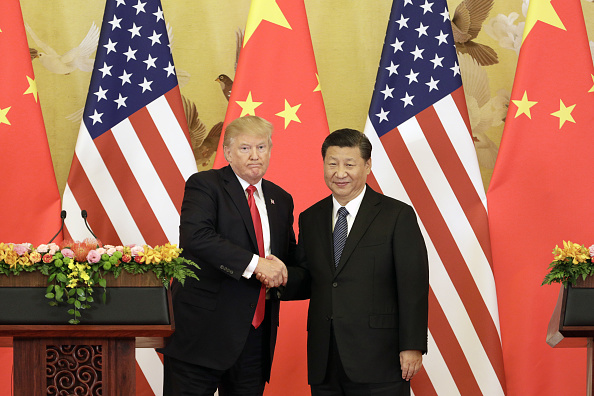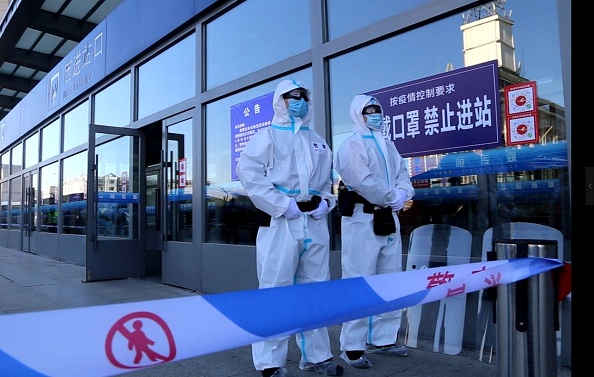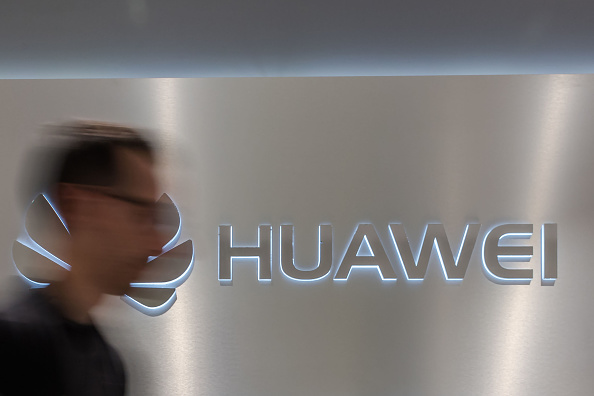
 Fractures and Fault Lines
Fractures and Fault LinesU.S.-China relations continue to deteriorate this week, with President Trump threatening to "cut off the whole relationship" with Beijing amid growing hostilities and finger-pointing over the coronavirus. The Trump administration continues to cast doubt on the origins of the virus, and an escalating U.S. push to blame China for the pandemic throws further animus into an already fractured relationship. Calls from not only the U.S. but also Australia, Italy, and Britain are alleging that Beijing is slow-walking an international push to investigate the source of the outbreak. China continues to reject the accusations surrounding COVID mismanagement, while Chinese state media are calling the allegations "preposterous and lies of one kind or another." Meanwhile, the U.S. Department of Homeland Security has warned that China is launching cyberattacks to steal coronavirus vaccine and treatment research, calling it a "significant threat."
What is more, Trump has expressed anger over China's progress towards fulfilling the Phase One trade agreement, commenting that his administration is "not exactly thrilled" over China's current purchases of U.S. farm goods and other products.. Meanwhile, several unnamed Chinese officials are advocating for China to take a harder line towards the limited trade deal, possibly even canceling the trade pact and negotiating a new one. Amid the back and forth, China still made a few large agriculture purchases this week.
 China Forges On
China Forges OnChina is gearing up for its politically momentous Two Sessions meeting next week, which was postponed after the coronavirus outbreak forced much of the country into lockdown. The meeting is expected to generate significant fiscal policies to deal with the economic fallout from COVID-19, as well as to address the trade war and international tensions over the coronavirus. For more on China's economy in the time of COVID-19, read "Effect of Coronavirus on China's Supply Chains" from Sara Hsu, a visiting scholar at Fudan University.
China's virus numbers remain low, with only a handful of new infections documented this week. Despite the low numbers, the new cases popped up as a cluster in Jilin city in northern China, signaling a possible regression and causing the city to reimpose travel restrictions. China also announced it would test the entire 11 million population of Wuhan.
As the virus continues to spread elsewhere, China continues to offer aid to other countries, sending delegations to South Korea and Sri Lanka this week to express support. Five Chinese cities and provinces have implemented a fast-track visa system for business travelers from South Korea, in order to maintain economic stability while limiting non-essential travel.
 Tech in the Balance
Tech in the BalancePresident Trump extended an executive order barring U.S. companies from purchasing telecoms equipment from Huawei and other technology firms that pose a national security risk, calling the telecoms companies a threat to the United States.
While Chinese tech is having a hard time in Washington, it's doing better on Wall Street. Kingsoft Cloud, one of China's top cloud services providers, raised over half a billion dollars in its IPO earlier this week, in what is now the largest Chinese company to have listed on the US stock exchange this year. Chinese tech giant Tencent also bought into Tim Horton's China expansion, after agreeing to a deal with the private equity firm in charge of the coffee chain's operations in the country.
Despite an overall boost for the Chinese digital industry, many tech firms have been forced to lay off employees, freeze recruitment, and reduce salaries. The tech sector dropped almost 25% in the first quarter, whereas Foxconn announced its iPhone factories are "back to normal," although the outlook for the second half of the year remains uncertain.
Prepared by China-US Focus editorial teams in Hong Kong and New York, this weekly newsletter offers you snap shots of latest trends and developments emerging from China every week, while adding a dose of historical perspective.
- 2020-05-09 Attacks and Counterattacks
- 2020-05-02 Retaliatory Actions
- 2020-04-24 Sinking Perceptions
- 2020-04-18 Pandemic World
- 2020-04-11 The Long Road Back to Normalcy
- 2020-04-03 Shifting Gears
- 2020-03-28 Cooperation or Confrontation
- 2020-03-20 World in Turmoil
- 2020-03-13 Global Emergency
- 2020-03-06 Global Strains
- 2020-02-28 Coronavirus Gone Global
- 2020-02-22 The Virus Continues
- 2020-02-15 Asserting Control
- 2020-02-08 A Novel Outbreak
- 2020-01-31 Global Health Emergency Declared
- 2020-01-24 Celebrations Grounded
- 2020-01-17 Signed, Sealed, Delivered
- 2020-01-10 Ink the Deal
- 2019-12-20 A Level Playing Field
